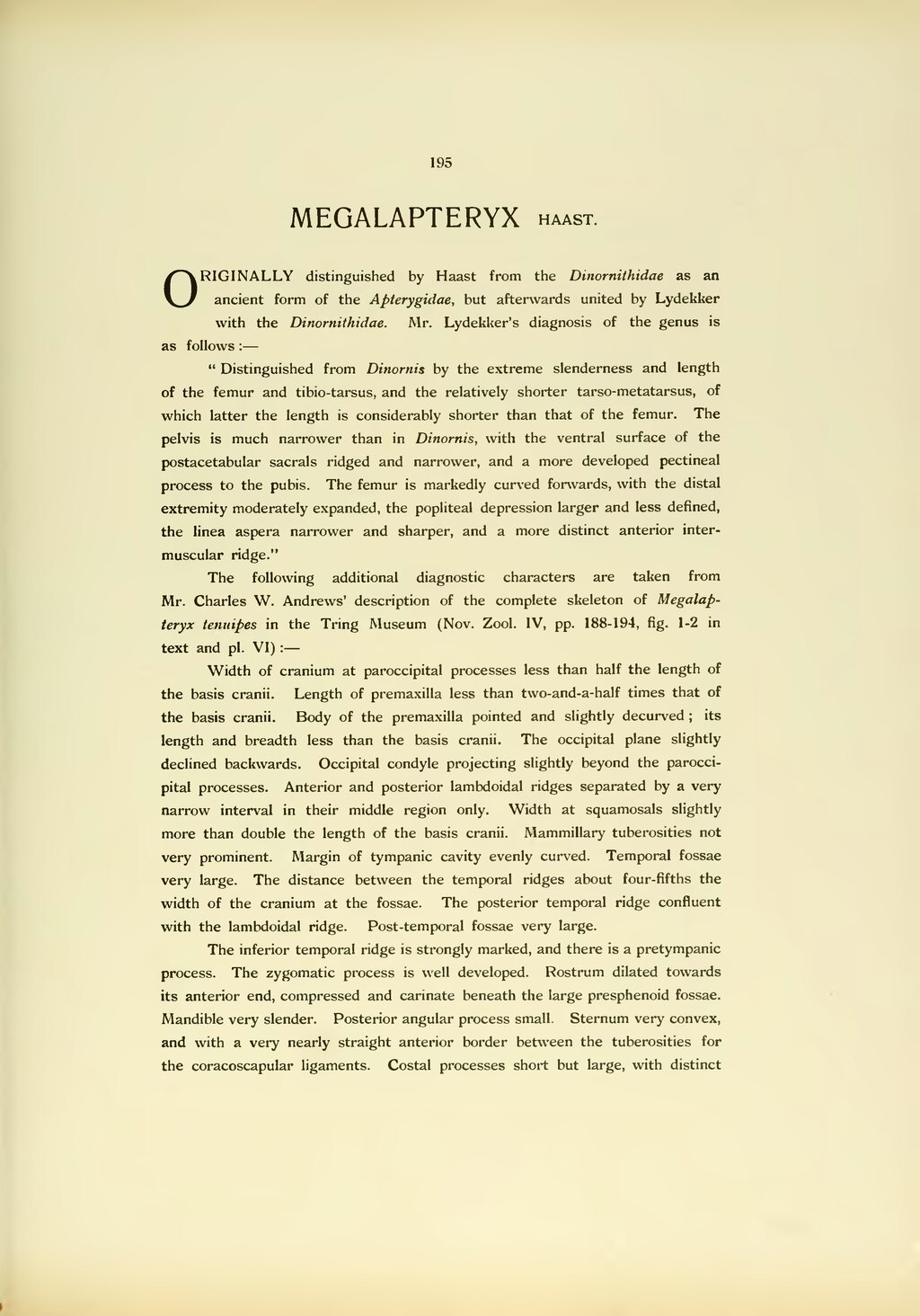195
MEGALAPTERYXHAAST.
Originally distinguished by Haast from the Dinornithidae as an ancient form of the Apterygidae, but afterwards united by Lydekker with the Dinornithidae. Mr. Lydekker's diagnosis of the genus is as follows:—
"Distinguished from Dinornis by the extreme slenderness and length of the femur and tibio-tarsus, and the relatively shorter tarso-metatarsus, of which latter the length is considerably shorter than that of the femur. The pelvis is much narrower than in Dinornis, with the ventral surface of the postacetabular sacrals ridged and narrower, and a more developed pectineal process to the pubis. The femur is markedly curved forwards, with the distal extremity moderately expanded, the popliteal depression larger and less defined, the linea aspera narrower and sharper, and a more distinct anterior intermuscular ridge."
The following additional diagnostic characters are taken from Mr. Charles W. Andrews' description of the complete skeleton of Megalapteryx tenuipes in the Tring Museum (Nov. Zool. IV, pp. 188-194, fig. 1-2 in text and pl. VI):—
Width of cranium at paroccipital processes less than half the length of the basis cranii. Length of premaxilla less than two-and-a-half times that of the basis cranii. Body of the premaxilla pointed and slightly decurved; its length and breadth less than the basis cranii. The occipital plane slightly declined backwards. Occipital condyle projecting slightly beyond the paroccipital processes. Anterior and posterior lambdoidal ridges separated by a very narrow interval in their middle region only. Width at squamosals slightly more than double the length of the basis cranii. Mammillary tuberosities not very prominent. Margin of tympanic cavity evenly curved. Temporal fossae very large. The distance between the temporal ridges about four-fifths the width of the cranium at the fossae. The posterior temporal ridge confluent with the lambdoidal ridge. Post-temporal fossae very large.
The inferior temporal ridge is strongly marked, and there is a pretympanic process. The zygomatic process is well developed. Rostrum dilated towards its anterior end, compressed and carinate beneath the large presphenoid fossae. Mandible very slender. Posterior angular process small. Sternum very convex, and with a very nearly straight anterior border between the tuberosities for the coracoscapular ligaments. Costal processes short but large, with distinct
